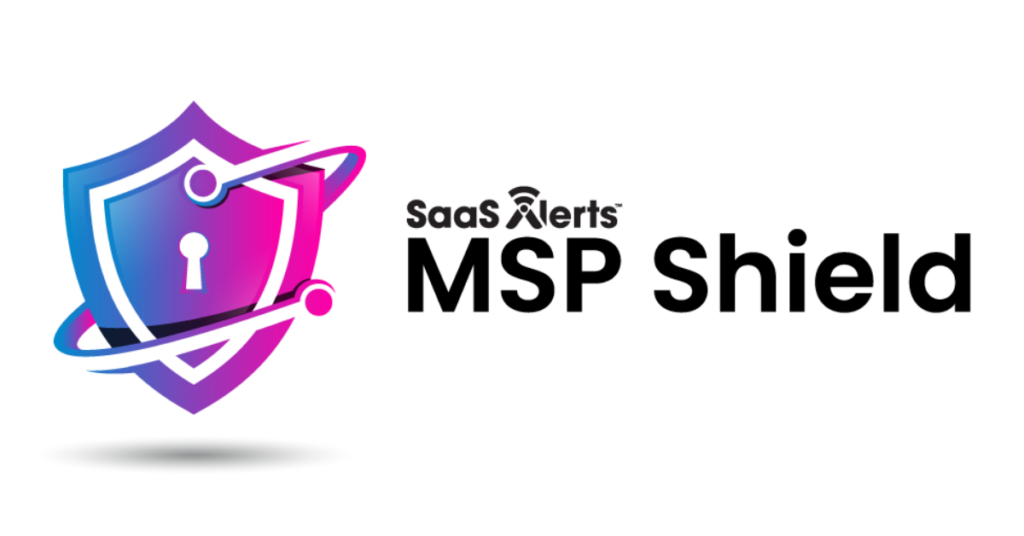How to Enhance Microsoft 365 Security: A Guide for MSPs
Microsoft 365 is a cloud-based productivity suite with over a million enterprise users worldwide. As a widely adopted system, this set of applications is a top target for cyberattackers. Since its security setup requires proper configuration to be effective, M365 protection is often a concern for businesses and a time-consuming task for MSPs.
If you want robust security monitoring within your clients’ environment, our Microsoft 365 best practices show you how to prevent and address potential vulnerabilities.
What Is Microsoft 365 Security?
Microsoft 365 security is a set of apps and features to protect user data within the suite. It combines built-in security controls and tools from third-party vendors. Here’s a breakdown:
- Data loss prevention (DLP): Prevents the sharing of sensitive information, minimizing the risk of data compromises and compliance violations.
- Identity and access management (IAM): Controls user permissions within Microsoft 365, simplifying management for on-premises resources, cloud data and third-party applications.
- Encryption: Scrambles data to make emails and chat messages unreadable by unauthorized users.
- Threat protection: Blocks malicious activity, including phishing attempts and suspicious links within Microsoft Outlook, Teams and other apps.
Why Secure Your Microsoft 365 Tenants
Improving Microsoft 365 security provides many benefits for your clients, including:
- Reduced risks of cyberattacks: According to the IMF, cyberattacks have doubled since 2020, resulting in losses estimated at $2.5 billion. With Microsoft 365 security best practices, you minimize the chance of invasions and data exposures.
- Cost savings: Prevention helps your clients avoid the costs of compliance violations, remediation and operational downtime resulting from data breaches. IBM reports the global average cost of these events reached $4.45 million in 2023.
- Improved compliance: Security controls help organizations meet ever-growing data privacy requirements, so they remain compliant with industry regulations.
- Proactive security posture: M365 protection best practices reduce the time you invest in incident responses and enable you to focus on preventive initiatives for your clients, such as vulnerability assessments and employee training.
Top Microsoft 365 Best Practices to Safeguard Your Clients’ Data
Let’s look at the Microsoft 365 best practices to enhance your clients’ security posture:
1. Enhance Email Protection Strategy
Microsoft Outlook security is a top priority to prevent the risk of sharing sensitive information via email. Here are practices for a multi-layered approach:
- Require MFA for all user logins: Multi-factor authentication (MFA) safeguards your account from compromise by over 99.9%, according to Microsoft. It adds an extra verification step to protect users from unauthorized access through stolen passwords.
- Boost anti-phishing defenses: Phishing compromises user credentials, infects devices and leads to data exfiltration. Built-in features like email filters and spoof intelligence reduce these attempts in Outlook. Awareness training is also highly recommended to educate your clients’ employees to identify and report suspicious emails.
- Enable mailbox auditing: By tracking who accessed inboxes or deleted messages, you identify compliance violations or potential involvement in data security breaches. This feature also indicates the need to adjust security and compliance protocols to prevent these occurrences.
2. Prevent The Risk of Data Exposure
Less data exposure in Microsoft 365 means fewer attack targets for cyberattackers. Resources for a stronger defense include:
- DLP rules: Detect and block sensitive data from external sharing. You configure these rules to define what is sensitive. The rules then scan emails, file uploads and chat messages searching for sensitive data elements. Check out our MSP guide to implement Microsoft 365 data loss prevention.
- Least privilege access controls: Restrict users to only the level of access they need to perform their job functions. It reduces the risk of unauthorized individuals viewing or downloading confidential data.
- Data classification: Classifying data based on its sensitivity (e.g., confidential, public) helps your clients understand which information needs the most protection.
Discover critical steps to take in case of a Microsoft 365 security incident.
3. Take Advantage of Microsoft 365 Security Tools
Microsoft 365 built-in tools are available for enterprise subscriptions and they should be a cornerstone of your security strategy. The set of solutions has options like:
- Microsoft Defender: An antivirus software with protection against malware, viruses and other cyber threats.
- Microsoft Purview: A set of tools to manage information security and ensure data privacy compliance, offering data classification, DLP and insider risk management.
- Microsoft Secure Score: A security assessment tool that analyzes your Microsoft 365 configuration and provides a score reflecting your security posture.
4. Automate Threat Detection and Remediation
Gartner estimates that automation leads organizations to a 15% improvement in their ability to meet both security and delivery targets.
Security solutions like SaaS Alerts leverage automation to detect and remediate threats to Microsoft 365. After identifying a threat, they automatically trigger predefined actions, like expiring all sessions and preventing new login attempts. It facilitates faster incident response, minimizing potential damage.
5. Manage Security Risks Through User Accounts
Effective user account management prevents unauthorized access to systems, protecting sensitive data from theft or corruption. Here’s how you minimize these risks:
- Clean up stale accounts: Stale accounts create vulnerabilities for attackers to exploit. Regularly removing inactive accounts reduces the attack surface in the Microsoft 365 environment. We recommend deleting accounts with no activity in the previous 30 days.
- Monitor guest accounts: Temporary users pose a security risk when left unmonitored. Checking these accounts helps identify unusual data transfer activities, preventing unauthorized access to sensitive systems.
Keep Microsoft 365 Secure with SaaS Alerts
Leverage Microsoft 365 security monitoring with SaaS Alerts to streamline your clients’ protection. Monitor over 200 different events with SaaS Alerts so you can act faster and remediate compromises.
Our platform enhances security for Microsoft 365 tenants by:
- Identifying unauthorized devices and data exfiltration
- Detecting dangerous file-sharing practices
- Alerting security configuration changes
- Automatically remediating risky login attempts as soon as they happen
- Streamlining Microsoft security configurations with Fortify
Ensure real-time security of your clients’ Microsoft 365 environment. Request your demo now.







